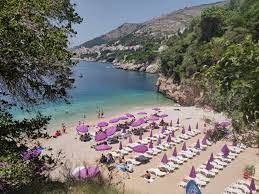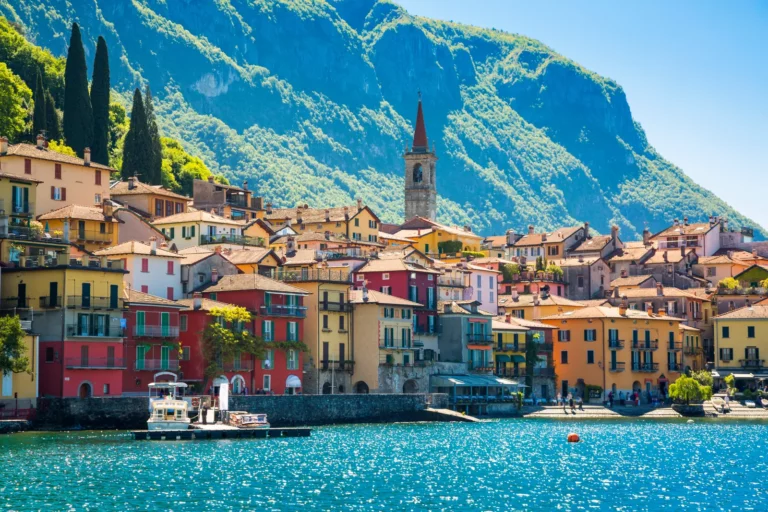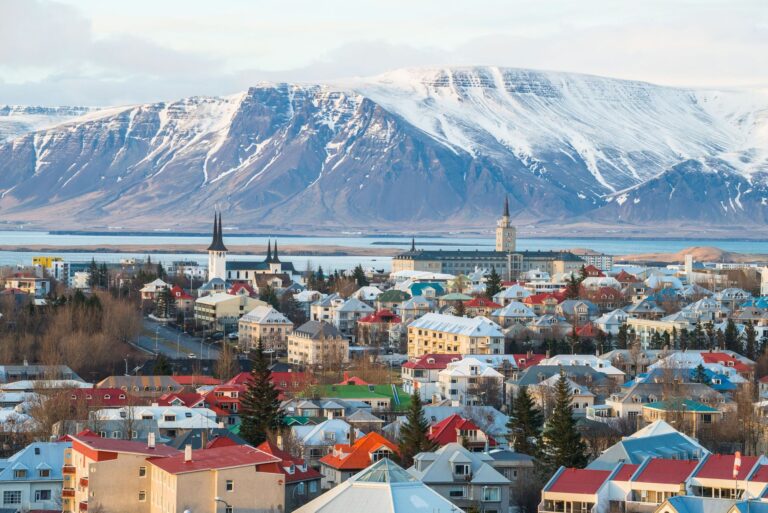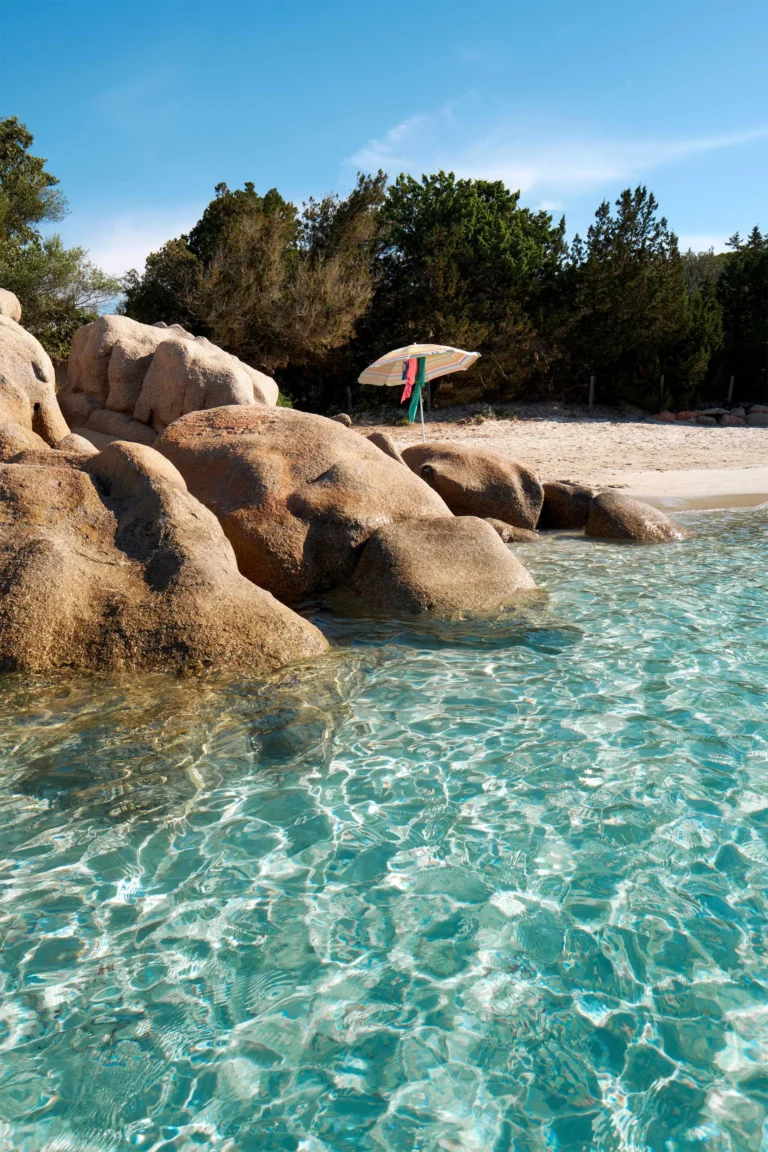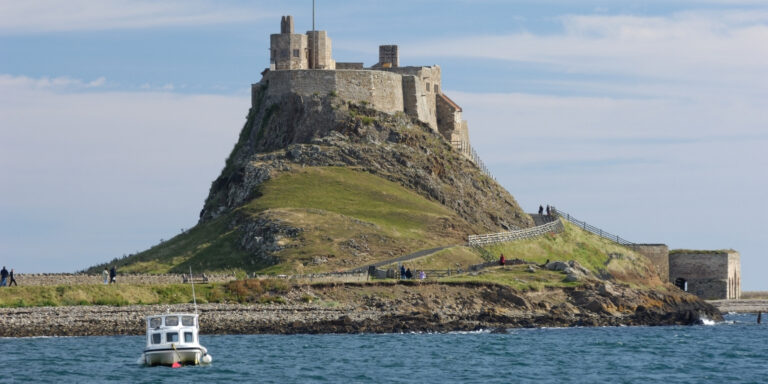Places to discover in Oporto
If you’re visiting Oporto, Portugal, you’ll be delighted to see that this city is full of beautiful architecture. In fact, the city has so much history and culture that it was named a UNESCO World Heritage Site in 1996! Check out this list of top places to visit in Oporto:
Clérigos Tower
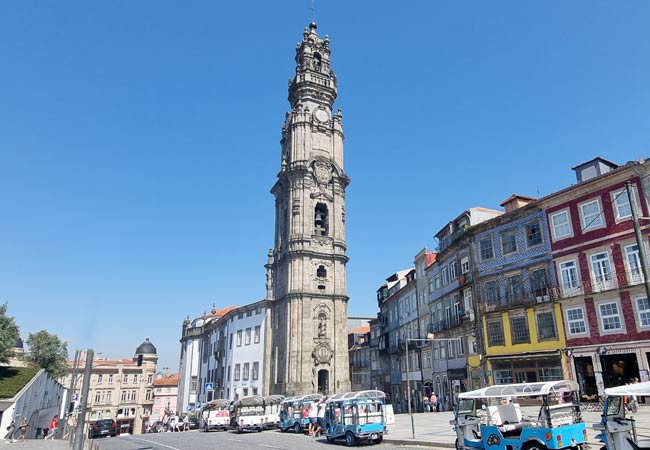
Clerigos Tower is one of the most famous monuments in Porto, so it’s a must-see for every tourist. It’s located in the heart of the city, not far from the Dom Luís I Bridge and near other landmarks such as Igreja de Santa Clara (Church of Santa Clara) and Casa do Infante (House of Prince), where you can enjoy some tranquility thanks to its garden.
Located in the heart of Porto, Clerigos Tower is a must-see for every tourist.
The tower has been around since the 12th century, and it was used as a place to keep watch on land and sea. It is also considered one of the most important monuments of Northern Portugal.
Clerigos Tower attracts many visitors because of its unique architecture, which includes a square base with octagonal towers at each corner. There are many other great views from this spot: you can see the Douro River and its bridges; Porto Cathedral; Sao Francisco Church; and several other landmarks in this area.
You can visit the Clerigos Tower during your vacation through Portugal, but if you want to take part in special events such as concerts or exhibitions about history or art then make sure to plan ahead so that you don’t miss out!
This national monument was built by Nicolau Nasoni and at its time of erection it was one of the tallest buildings in Portugal.
The Clerigos Tower was built in 1754 by Nicolau Nasoni, an architect who was very famous at the time. The tower was one of the tallest buildings in Portugal at the time it was erected. It is located in a small square called Praça dos Clérigos (Clerics’ Square), which has been designated as a national monument since 1910.
This rectangular tower is divided into three sections: ground floor, first floor and belfry.
The bell on top of the tower weighs 3.2 tons, and to hear it sound you have to climb 240 steps all the way up.
On a blustery day, make the climb to the top of this fortified tower for a sense of history and a view that makes your heart sing. The bell on top of the tower weighs 3.2 tons, but it’s worth it when you hear its sweet chime from down below.
You can get a good workout from climbing the tower, which has 240 steps. The tower is in the heart of Porto and is part of a larger church. It’s unique and beautiful, so you’ll want to check it out while you’re in town!
The tower is part of a larger church with a Baroque style interior.
The Clerigos tower is part of a larger church with Baroque style interior. The church is located in Porto, and was built by Nicolau Nasoni between 1650 and 1659. The tower was designed by António de Oliveira Bernardes, who also designed some of the exterior decorations for the cathedral in Évora (Portugal).
Outside there’s a garden where you can find some tranquility and escape the busy city life. The garden is a great place to relax, with all types of benches that can be used for relaxing or playing games. There’s also a fountain where you can listen to its pleasant sound while taking some pictures in front of it
The Bolhao market

The Bolhão Market is not just another market. It’s a Portuguese tradition passed from generation to generation. The market was built in 1914 and it became the meeting point for Porto citizens – no wonder it’s also called “The Heart of Porto”. The Bolhão Market was once a square where farmers used to sell their products, but now it’s turned into one of the most popular tourist attractions in Portugal.
The Bolhão Market is a meeting point for the community, where you can find everything you need, but also enjoy some traditional Portuguese food and even listen to live music while you’re at it. With its long history, this market has become one of the most important ones in Portugal.
The market is made of two levels, the bottom one where shoppers can find fish and meat delicacies, and the top floor where they can find fruits and vegetables. The market was built in 1914.
On Sundays there is often live music played at this market, which attracts many people from Porto and its surroundings.
Livraria Lello bookshop

Lello bookstore is a bookstore in Porto, Portugal. It was established on 1906, and it’s considered to be one of the most beautiful bookstores in the world. The bookstore has been featured as one of the most romantic places in all over Europe by many magazines and websites.
The interior design of Lello is inspired by Italian villas from 16th century with frescos, ornate furniture and chandeliers. Also you can find there old sculptures carved into wooden bookshelves; these sculptures depict mostly birds, angels and devils.
The Art Nouveau building that houses the bookstore was designed by architect Francisco Xavier Esteves.
The Art Nouveau building that houses the bookstore was designed by architect Francisco Xavier Esteves. The style is known for its use of natural materials, with curved lines and floral motifs inspired by nature.
The Lello bookstore is considered to be one of the most beautiful bookstores in the world according to critics.
This bookstore is considered to be one of the most beautiful bookstores in the world according to critics. The Lello bookstore is a UNESCO World Heritage Site and has been voted as one of the most beautiful bookstores in the world by Time Magazine.
Architect Francisco Xavier Esteves designed it and built it with his brother Joaquim José. It was opened on 1906, however, it was closed down later due to bankruptcy during WWII and reopened on February 7th 1946 after being renovated by architect Fernando Távora who added wooden floors and modern lighting fixtures.
Palácio de Cristal palace

The Palácio de Cristal was built to serve as a glass palace during an international exposition in Porto. The French architect Gustave Eiffel, best known for the Eiffel Tower in Paris, designed the building and it was constructed between 1883 and 1888 by Portuguese engineer Joaquim Possidónio Narciso da Silva. Almost all of its walls are made almost entirely of glass panels supported by wrought iron beams that were prefabricated at a factory in Amarante and assembled on site. The building was officially inaugurated on June 20th 1894 with much fanfare but it quickly fell into disrepair after being abandoned for decades. It wasn’t until 1986 that restoration work began again under supervision from UNESCO (the United Nations Educational Scientific Cultural Organization). Today you can visit this stunning architectural masterpiece which is open year round with regular guided tours available in both English and Portuguese!
The building is next to the river Douro.
The Palácio de Cristal palace is located in the city of Porto, Portugal. It is next to the Douro river and on a hill that overlooks the city.
It’s made almost entirely of wrought iron and glass.
The Palácio de Cristal was built with wrought iron and glass, two materials that were in high demand at the time. Wrought iron is made by heating and hammering steel until it becomes soft enough to be easily bent into different shapes. Glass is a brittle material that has been used for thousands of years for windows, bottles and other containers because it’s transparent but very durable; however, it can break if dropped on hard surfaces like floors or tables.
The palace has a large collection of rare plants and flowers, which is shown to the public during the annual festival. The gardens are open to the public, where they can see and admire the many exotic plants. These include various species that come from many different countries around the world. There are also several greenhouses where some species can be viewed year-round if you visit during off times when there isn’t any activity taking place within these structures.
These exotic species include those from Nepal, China and Japan as well as other countries whose climates are similar enough for them to thrive here at Palácio de Cristal Palace! These beautiful gardens were designed by famous French landscape artist Jacques Gréber who was hired by King Charles I himself; this makes this place very special indeed!
The gardens are very popular with photographers.
You’ll be able to take photos of the palace itself, or of people enjoying the gardens. The gardens are popular with photographers because there are so many photo opportunities. You can take shots of couples walking hand in hand, children running around and playing on the grass, or even artists painting their creations. There are also lots of different trees and plants for you to photograph as well!
The palace is an icon of Porto and an important tourist attraction because it offers visitors one of the best views over old town center. You can visit this building with either your own transportation or public transportation: bus number 723 (at Praça Infante Dom Henrique) or tram #15 (at Campo Alegre). each other.
Serralves Museum and Modern Art Gallery

The Serralves Museum and Modern Art Gallery is located in Porto, Portugal. The museum was founded by the Serralves Foundation in 1996 and opened its doors in 2002. It houses a collection of modern art, including paintings, sculptures and photographs from artists such as Jackson Pollock, Paul Cezanne and Pablo Picasso.
The museum has three permanent exhibitions: “The Collection” which displays works from the foundation’s own collections; “History of Sculpture” which explores the history of modern sculpture; and “Artists’ Studios” which includes works by artists who were invited to create new artworks at the museum itself. The building itself is also impressive—it was designed by Álvaro Siza Vieira (Portugal), who won Pritzker Prize for architecture in 1992!
Visit Serralves Museum and Modern Art Gallery
The Serralves Museum and Modern Art Gallery has a collection of contemporary art that you can visit on a daily basis. The museum dates back to 1996, but it has been constantly updated since then, making it one of the most important museums in Portugal. It also hosts many events throughout the year, from concerts and exhibitions to conferences and workshops in different fields such as dance or theater.
Serralves is located in Porto’s largest park and offers guided tours for groups upon request. A visit here is free of charge; however, there is parking available for an hourly fee if you’re driving yourself over instead of taking public transportation from Porto’s city center (the latter option will cost about €1 each way).
Architecture
The building was designed by the architect Mota, who was inspired by the work of Italian futurist and inventor Fortunato Depero. The museum is a 20th-century architectural masterpiece that blends modern art with classical influences and features an open courtyard in its center. It opened in 1947, making it one of Porto’s newest museums but also one of its most beloved.
The museum has earned recognition as a cultural institution due to its unique design and exhibits high-quality artwork from artists such as Picasso and Miró.
How to get there
The Serralves Museum and Modern Art Gallery is an easy place to reach from the Porto city center, with most people taking the metro from their hotel or apartment. It’s also possible to drive there, though it’s best to avoid driving in Porto when possible, since most of its streets are narrow and parking is hard to find. If you choose this option, use [parking website] for help finding a spot near the museum.
The metro station closest to the Serralves Museum is Estação da Boavista (Line B), which can be reached by taking any train heading eastbound towards Matosinhos or Maia on Line B of the Rodoviária do Norte (Northern Railway) subway line; simply get off at that stop when you arrive at Estação da Boavista (the third stop from São Bento). Once there, walk 200 meters down Rua Carlos Alberto Manso toward Avenida Rodrigues de Freitas until you come upon Largo Carlos Alberto Manso; turn right onto this street and walk another 250 meters until reaching Rua Conde de Alegrete; then turn right again onto Rua Constante Ramos da Silva until seeing signs pointing toward Parque de Serralves; follow these signs southward through Parque de Serralves until reaching your destination!
The Porto Cathedral

The Porto Cathedral is a Roman Catholic cathedral located in the historical centre of the city of Porto, Portugal. Its official name is Dedicated to Saint Mary.
The original Romanesque building was built by Bishop Teodomiro between 1025 and 1128. The present appearance of the cathedral dates back to a major reconstruction carried out between 1580 and 1620 by Italian architects commissioned by King Philip I, who considered himself a native of Porto (he was born in Lisbon), and wished to expand his kingdom’s capital further up north.
Portuguese military engineer Manoel de Oliveira Lima supervised construction work on site during this period; he also created plans for some churches that were later built in northern Portugal (in Braga and Viana do Castelo).
The cathedral is built from granite blocks with limestone details in its interior decoration – these are both features shared with most other cathedrals throughout Northern Portugal at this time (for example in Braga).
The cathedral is situated in the historical centre of the city of Porto, near other historical monuments such as the medieval Church of Cedofeita, the Church of Mercy and Tower of Clerics.
In this area there are many shops and restaurants where you can taste traditional Portuguese food or shop for souvenirs.
The location is ideal because it’s close to many tourist attractions, including Ribeira Square (which has a beautiful view over Douro River), Clérigos Tower and other landmarks that are part of Porto’s history. The cathedral itself is open daily from 9:30 am to 1 pm and 3:30 pm to 6 pm (except on Sundays).
History timeline.
The “modern” Porto Cathedral was built over a period of more than two centuries, from 1110 to 1333. It was constructed in the Romanesque style, but it has been rebuilt several times since then and so it looks very different now than when it was first built. The current building is a mix of styles such as Romanesque and Gothic with Renaissance elements.
In 1204 during an earthquake part of the church collapsed and had to be rebuilt in Gothic style during a second campaign from 1237–1243; this extended the church westward, adding three chapels to each side. The building was then restored several times over the centuries until it fell into disrepair in the 20th century. The last major renovation occurred between 1952 and 1956, when it was completely rebuilt by architect Frederico Brandão da Silva, but much effort has been put into restoring its original appearance since then.
The Stock Exchange Palace (Bolsa Palace) in Porto

The Stock Exchange Palace is one of the most beautiful buildings in Porto, and it’s located right next to the city’s historic center. Built between 1842 and 1910, the Palacio da Bolsa was supposed to be the residence of a rich Portuguese family. The building was designed to host the city’s stock exchange (hence its name), but now that function has been moved elsewhere; today, it houses cultural events like concerts or art exhibitions. The building is surrounded by manicured gardens that are open for public use, so be sure to visit them if you’re interested in seeing more than just this impressive architectural masterpiece!
Built between 1842 and 1910, the Palacio da Bolsa was supposed to be the residence of a rich Portuguese family.
If you’re looking for a beautiful building to explore in Porto, there are plenty of options – but the Stock Exchange Palace is one you shouldn’t miss. Located just outside of Porto’s historic center, this building was built between 1842 and 1910. It once served as the residence of a wealthy Portuguese family. Although it has been used primarily for business since then, it still bears many traces of its former glory days.
Built over a period of 50 years, the Palacio da Bolsa was supposed to be a private residence for José da Costa Lima e Silva (also known as Conde de Ficalho). However, his plans didn’t pan out because he ran out of money before construction could be completed on his dream home—so instead he decided to use the palace as an office building instead!
The interior features marble floors with ornate carvings along with painted ceilings that depict mythological scenes from Greek mythology; these paintings were created by artist Joaquim Maria Machado de Castro between 1840-1850.
Later, it became the seat of the city’s stock exchange.
A group of merchants came together to form the Stock Exchange Palace. It became the center of Porto’s financial district and is now a major tourist attraction. The palace hosts many events throughout the year like art exhibitions, concerts and conventions. You can visit it on certain days or make an appointment with one of its employees who will show you around if you’re interested in learning more about its history or architecture.
Architecture
The Stock Exchange Palace in Porto is a neoclassical and neogothic style building that was designed by the Portuguese architect José Marques da Silva. The palace is made of stone and marble, with carved reliefs on its facade. The interior features many ornate decorations such as chandeliers, columns, stairs and balconies made out of woodwork or stained glass windows.
There are two main rooms inside: The “Tea Room” (“Sala do Chá”) which is decorated with carpets from an English manufacturer called Axminster; And another large room that was used as an exchange where traders would buy and sell stocks.
Location
The Stock Exchange Palace is located in the city center of Porto, Portugal. It is a prominent landmark in the historic center of Porto and an important icon for both Portuguese and international tourism. It’s also one of the most interesting places to visit while exploring this gorgeous city!
Porto has a lot of history, so it’s no surprise that there are many fascinating historical sites around town. In fact, there are more than 100 historical buildings in Porto (including palaces!)—and this building is one of them!
Visiting the Palacio da Bolsa
Visiting the Palacio da Bolsa is very easy if you are visiting Porto on your own: it is open to the public from 9am to 6pm, with guided tours available in English, French, Spanish and German. You can also visit the Stock Exchange Museum which offers exhibitions about its history and traditions.
Inside this remarkable building there are many shops where you can buy souvenirs or snacks – like traditional pastéis de nata (custard tarts). The garden surrounding it also has several cafes where you can eat outside or just sit down and enjoy your coffee while taking pictures of its beautiful architecture!
Oporto is a beautiful city with so much history to explore and beautiful architecture to admire. It is one of those cities that will leave you wishing you had more time to explore.

